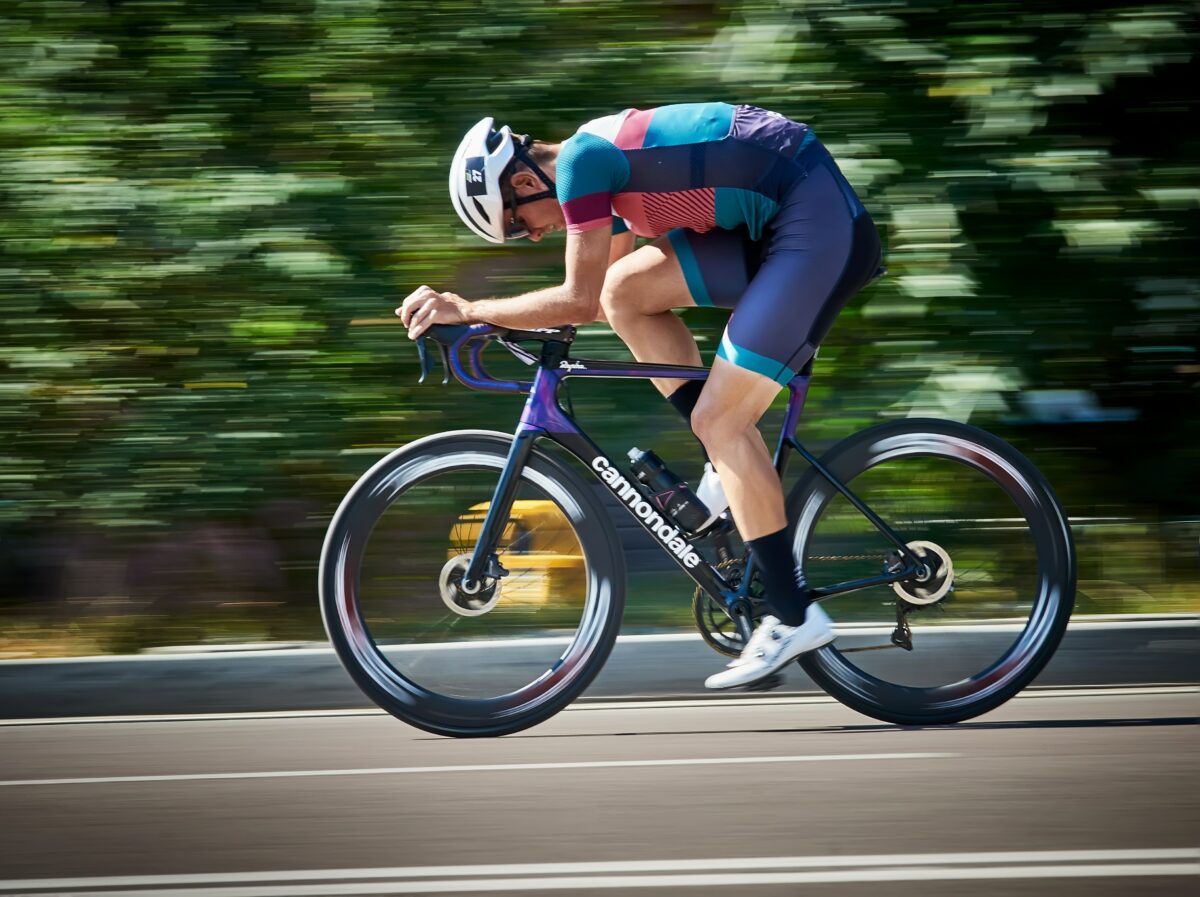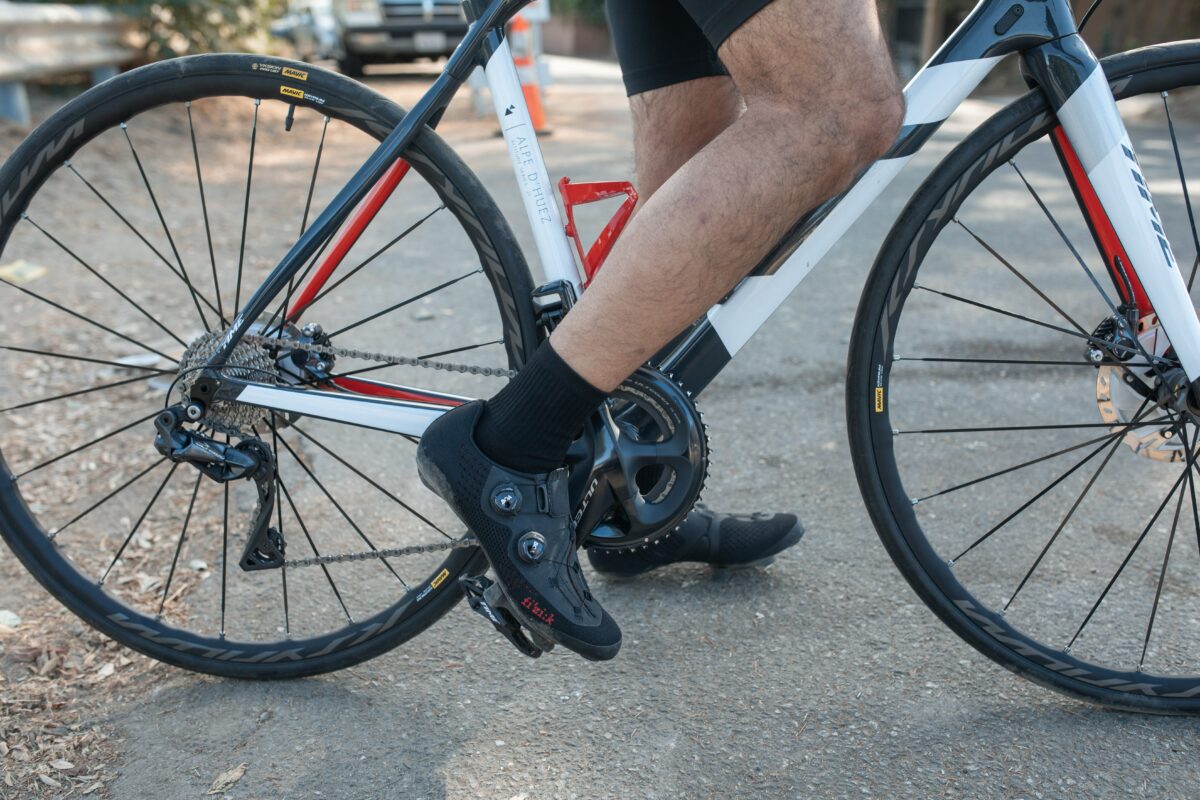
Cycling is not just about choosing the right gear – it’s also about the cadence. But is there really an “optimal” cadence for all cyclists? We dive into the fascinating world of cadences and discuss whether there is a genuine standard or it’s just down to each person’s preferences.
The question of the optimal cadence
Cadence is the number of pedal revolutions per minute and has a direct impact on the efficiency, speed, and strain while cycling. Opinions around it are divided – some experts say a higher cadence is better as it puts an even strain on muscles and protects joints. By way of contrast, others swear by a lower cadence, which generates more power per pedal revolution and can therefore be particularly advantageous in hilly terrain or if there is a strong headwind. However, you should remember that the optimal cadence is heavily dependent on personal factors, such as physical fitness or preference.
How to work out your optimal cadence
To work out the optimal cadence when cycling, you need to take an individual approach: there is no defined “right” cadence, but there are different ways to find out what cadence best suits your cycling style, your fitness, and your goals.
- Vary your cadence: During your trainingrides you should consciously experiment with different cadences. Cycle for a while at a higher cadence (90-100 revolutions per minute) and then at a lower cadence (60-70 revolutions per minute.) Pay attention to their impact on your speed, your muscles, and your overall performance.
- Think about the terrain: Adapt yourcadence to the landscape. On flat terrain or during your warm-up, a higher cadence might be more efficient. When going uphill or if there’s a headwind, you might benefit from a lower cadence.
- Feel your body: Pay attention to how your body feels during the ride. Does your cadence feel natural and comfortable? Take note of the strain on your muscles and joints and your respiratory rate.
- Analyze your data: Use technological aids like smartwatches to collect data. They can give you some indication of how your speed, heart rate, and performance vary at different cadences.
- Consider your long-term goals: Your optimal cadence can change over time if you improve in training or change your goals. Keep this factor in mind and be prepared to adapt your cadence.
Ultimately, you need to find your personal cadence – the cadence that feels best for you and optimizes your performance. Experimenting with different cadences, paying attention to your physical reactions, and collecting data will all help you to make a valid decision that is suited to your individual cycling style and your goals.
Which muscles are used when cycling?
Cycling activates and uses different muscle groups to push the pedals, maintain balance, and keep control over the bike. The number of different muscles activated makes cycling an effective full-body workout.
The main muscles used when cycling are:
- Thigh muscles
- Glutes
- Calf muscles
- Back muscles
- Abdominal muscles
Cycling is a holistic sport that exercises and strengthens different muscle groups at the same time. It is also a great way to train the muscles in the lower body, torso, and even the arms.
me time. It is also a great way to train the muscles in the lower body, torso, and even the arms.

The cadence dynamic: low vs. high cycling cadences
Low cadences are around 60-70 revolutions per minute, or even less, and are often linked to greater exertion. This means that for every revolution of the pedal, more power is exerted on the pedal. This can be an advantage if you are handling steep climbs or technically challenging terrain, as more power is needed to push the bike forward.
High cadences are around 90 through 100+ revolutions per minute and are based on a faster pedal revolution with less exertion per revolution. This cadence is particularly useful on flat terrain and at higher speeds.
Advantages and disadvantages of low and high cadences
Cyclists are often faced with the question of whether they should cycle at a low or high cadence. To find the answer, you need to weigh up the advantages and disadvantages of both approaches:
Advantages of a low cadence:
- Power transmission: Low cadences enable you to put more power into each revolution of the pedals. This is particularly useful if you are faced with high resistance, like climbs in uneven terrain.
- Building muscle: The greater exertion at low cadences mean you can build muscles more effectively, particularly in the thighs and glutes.
Disadvantages of a low cadence:
- Fast fatigue: The high level of exertion per revolution can lead to faster muscle fatigue, particularly on longer rides.
- Strain on joints: Low cadences put more of a strain on the knee and hip joints, which can lead to discomfort or even injuries.
Advantages of a high cadence:
- Efficiency: A high cadence means the pedals revolve faster, which makes you more efficient on flat terrain or at high speeds.
- Low muscle fatigue: Less power per revolution means that it takes longer for muscles to tire, which is an advantage, particularly on long rides.
Disadvantages of a high cadence:
- Less power transmission: Excessively high cadences can lead to inefficient power transmission, particularly if the resistance is not set appropriately.
- Risk of stress: A cadence that is too fast can lead to stress on the knee and lower back if you aren’t using the right technique.
Whether you decide to use a low or a high cadence depends on individual factors, training goals, and terrain conditions. Cyclists can benefit from both approaches by choosing a balanced strategy. While low cadences have advantages in mountainous terrain or when facing high resistance, high cadences can be beneficial on flat terrain and for longer rides.
Ultimately, cycling is not only about speed or distance. It is also about that feeling of harmony between body and bike. The cadence is another instrument to help you reach this harmony. The desire for an “optimal” cadence is more an opportunity to understand your own body and optimize its performance.
So, get on your bike and pedal vigorously – the road is in front of you, let the adventure begin! 😊
Image source: pexels-igovar-igovar-5174283, pexels-rdne-stock-project-5836914